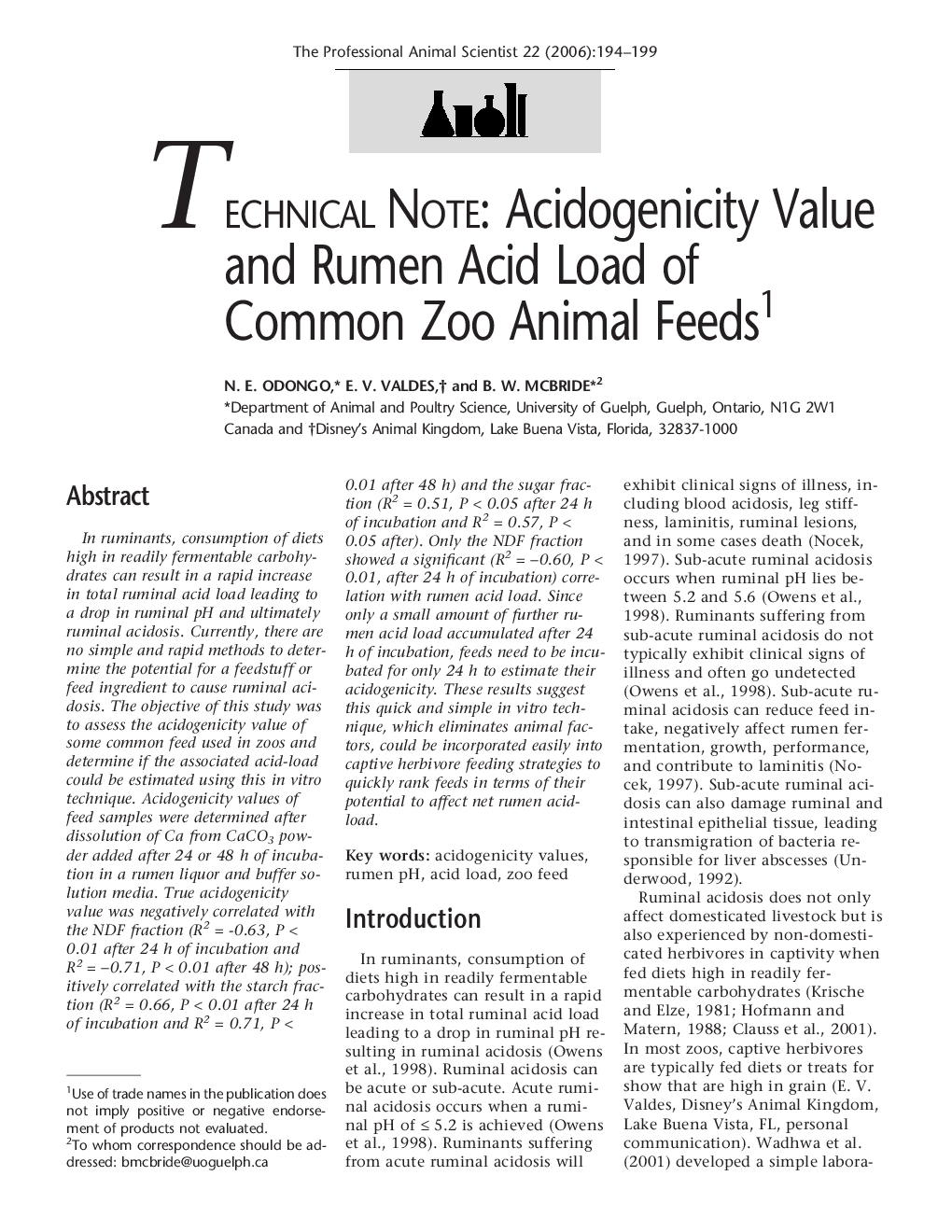| کد مقاله | کد نشریه | سال انتشار | مقاله انگلیسی | نسخه تمام متن |
|---|---|---|---|---|
| 2454561 | 1110398 | 2006 | 6 صفحه PDF | دانلود رایگان |
عنوان انگلیسی مقاله ISI
Acidogenicity Value and Rumen Acid Load of Common Zoo Animal Feeds1
دانلود مقاله + سفارش ترجمه
دانلود مقاله ISI انگلیسی
رایگان برای ایرانیان
کلمات کلیدی
موضوعات مرتبط
علوم زیستی و بیوفناوری
علوم کشاورزی و بیولوژیک
علوم دامی و جانورشناسی
پیش نمایش صفحه اول مقاله

چکیده انگلیسی
In ruminants, consumption of diets high in readily fermentable carbohydrates can result in a rapid increase in total ruminal acid load leading to a drop in ruminal pH and ultimately ruminal acidosis. Currently, there are no simple and rapid methods to determine the potential for a feedstuff or feed ingredient to cause ruminal acidosis. The objective of this study was to assess the acidogenicity value of some common feed used in zoos and determine if the associated acid-load could be estimated using this in vitro technique. Acidogenicity values of feed samples were determined after dissolution of Ca from CaCO3 powder added after 24 or 48Â h of incubation in a rumen liquor and buffer solution media. True acidogenicity value was negatively correlated with the NDF fraction (R2 = -0.63, P < 0.01 after 24Â h of incubation and R2 = â0.71, P < 0.01 after 48 h); positively correlated with the starch fraction (R2 = 0.66, P < 0.01 after 24Â h of incubation and R2 = 0.71, P < 0.01 after 48 h) and the sugar fraction (R2 = 0.51, P < 0.05 after 24Â h of incubation and R2 = 0.57, P < 0.05 after). Only the NDF fraction showed a significant (R2 = â0.60, P < 0.01, after 24Â h of incubation) correlation with rumen acid load. Since only a small amount of further rumen acid load accumulated after 24Â h of incubation, feeds need to be incubated for only 24Â h to estimate their acidogenicity. These results suggest this quick and simple in vitro technique, which eliminates animal factors, could be incorporated easily into captive herbivore feeding strategies to quickly rank feeds in terms of their potential to affect net rumen acid-load.
ناشر
Database: Elsevier - ScienceDirect (ساینس دایرکت)
Journal: The Professional Animal Scientist - Volume 22, Issue 2, April 2006, Pages 194-199
Journal: The Professional Animal Scientist - Volume 22, Issue 2, April 2006, Pages 194-199
نویسندگان
N.E. Odongo, B.W. Mcbride, E.V. Valdes,